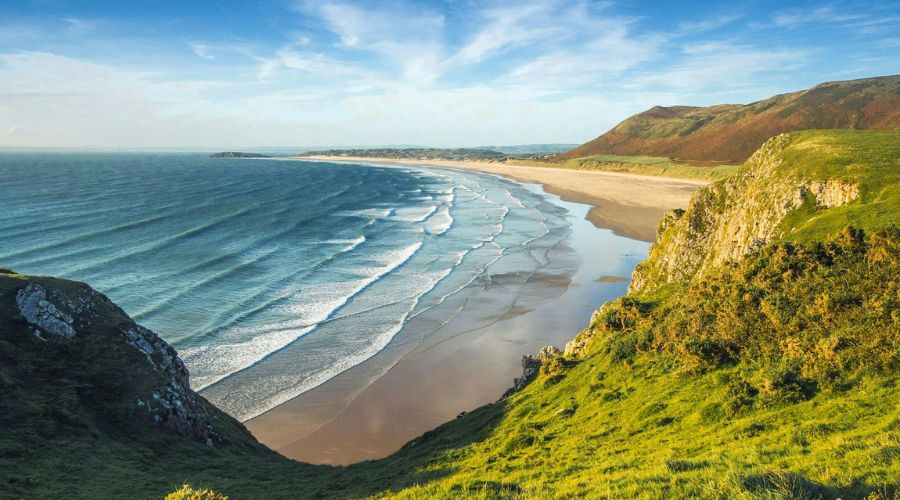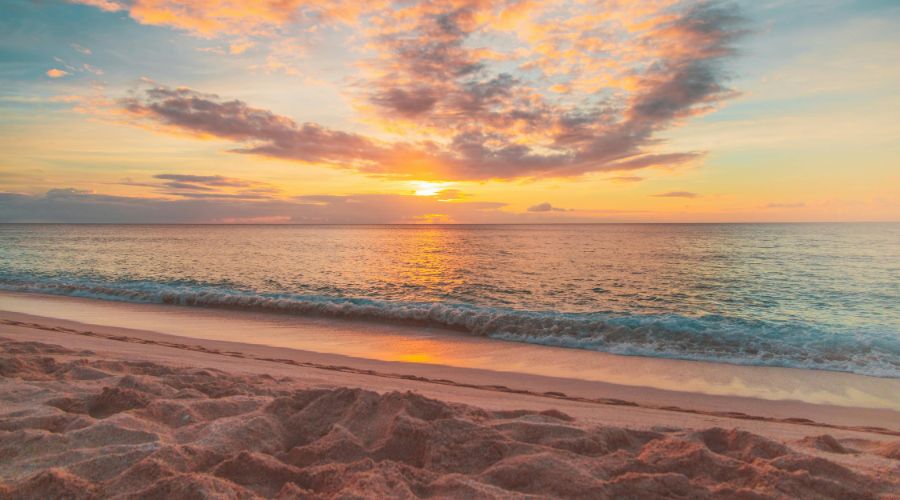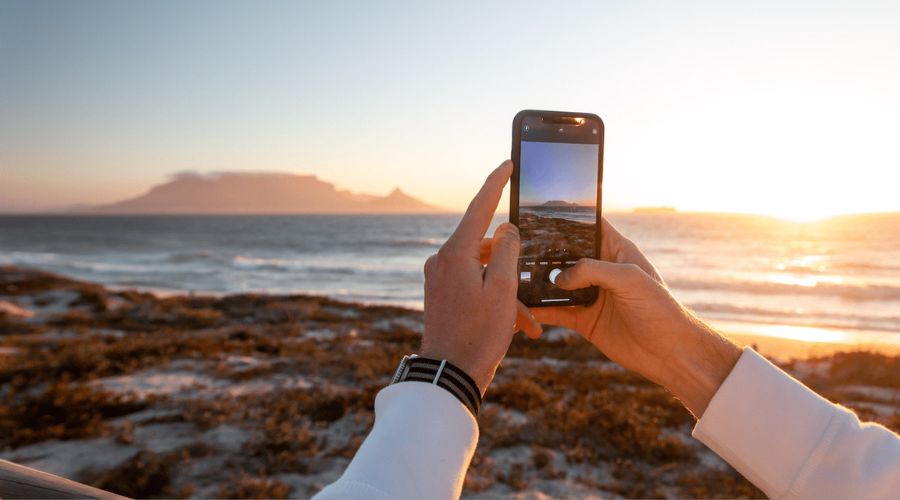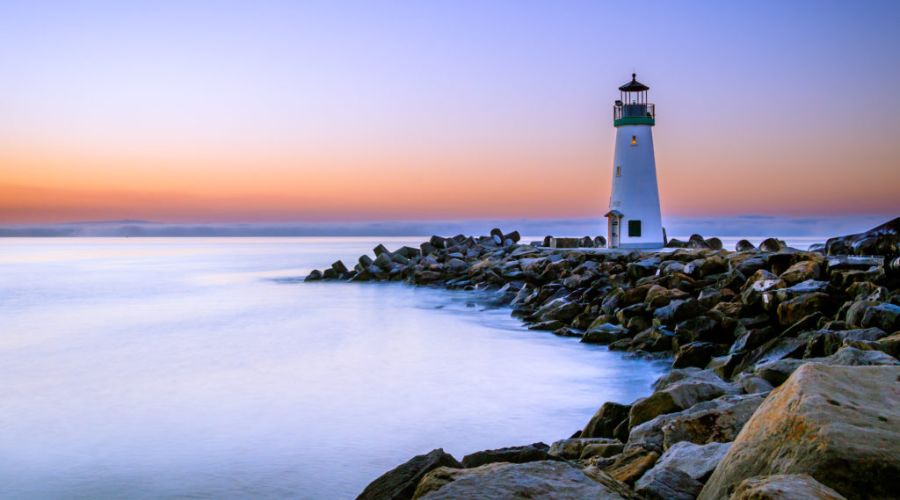Essential Gear for Coastal Photography
As you dive into the world of coastal photography, the right gear is a must-have to catch that perfect wave or the golden hour.
Don’t let technical snafus throw sand in your shoot; read on for tips on the right tools for the job.

Choosing the Right Camera for Coastal Conditions
Let’s face it, saltwater and cameras are like oil and water – they don’t mix well. Choose a camera that can handle a splash or two. Weather-sealed bodies are your friend here.
You want a camera that laughs in the face of salty spray and sandy gusts.
Remember, any old camera can snap a beach selfie, but you’re after the shots that make folks say “wow.”
Lenses Suited for Coastal Landscape and Wildlife
Coastal shots are a cocktail of wide beaches and intimate wildlife moments.
A wide-angle lens will grab those expansive horizons like a pro, while a telephoto lens will get you up close and personal with the critters, without getting nipped. Think of your lens as your beach buddy – always ready to zoom in on the fun.
Filters to Enhance Your Coastal Shots
Filters are like sunglasses for your camera. They cut through glare and protect those eyes… I mean, the lens.
A polarizing filter is a gem for making water and skies pop. It’s like dialing up the color on your favorite beach postcard.
And don’t forget a neutral density filter for those silky-smooth water shots you’ll hang on your wall.
Additional Accessories for Protection and Stability
Got your camera and lens? Great, but don’t skedaddle to the shore just yet. A sturdy tripod will keep your shots as stable as a lighthouse.
Remember, the ocean breeze isn’t just for flying kites – it’ll jiggle your camera too. Bag those plastic cases or sleeves too; they’re like raincoats for your gear. You wouldn’t stand in a downpour without a jacket, so don’t let your camera either!
Between dodging waves and chasing sunsets, coastal photography is as unpredictable as a seagull’s mood. Keep your gear ready, your wits sharp, and let the salty air guide your creative spirit.
With these tips up your sleeve, you’re all set to click some stunners and maybe even make the sea creatures a tad jealous.
Mastering the Technical Aspects
Ready to dive into the nuts and bolts of coastal photography?
Your camera’s settings are your best pals for turning good shots into great postcard-worthy images. Let’s get cracking on these technical tips, shall we?
Setting the Correct Exposure for Bright Beach Scenes
Snap! That’s the bright sun fooling your camera’s metering system. For stunning beach scenes, you might need to outsmart your camera.
If your shots are coming out overexposed (too bright, like a vampire’s worst nightmare), dial back the exposure compensation.
On the flip side, if they’re underexposed (darker than your favorite coffee blend), hike it up a notch.
Remember, the histogram is your buddy; keep an eye on it and don’t let the whites peak too high or your shots will be washed out like a driftwood in high tide.
Ideal Aperture and Shutter Speed for Dynamic Seascapes
Splish splash, want those waves crashing at just the right speed? It’s all about the shutter speed.
A faster shutter freezes action – think a seagull in mid-squawk. A slower shutter, and you’re making poetry in motion with those waves. But it’s a balancing act.
Pair that with an aperture to control depth of field – maybe f/8 for a group selfie with the shoreline crisper than a bowl of cornflakes in the background.
Play around like it’s high tide – go forth and find your sweet spot!
Using ISO to Your Advantage by the Sea
Grainier than a sandy sandwich, high ISO can ruin a beach shot. Keep your ISO as low as a crab’s belly, especially in the bright daylight.
This will help you capture the slick sheen of the water without the noise. But as the sun dips away, don’t be shy to nudge that ISO up so your picture doesn’t look like it’s taken in a cave.
Focusing Techniques for Sharp Coastal Images
Want the skinny on keeping it sharp? Autofocus is like a beach buddy that sometimes needs to be told where to have fun.
Use single point focus to tell your camera exactly where to look, so it doesn’t get distracted by pesky seagulls.
And if your lens has Image Stabilization (IS) or Vibration Reduction (VR), turn it on to avoid a blurry horizon that looks like you’ve had one too many margaritas.
Whether you’re capturing the roll of the tide or the gull’s glide, remember, sticking to these tips is like balancing a beach ball on your nose — tricky, but sure to draw attention and make for a fabulous photo-finish.
Composition Techniques in Coastal Photography
Got your camera and your eyes set on the vast blue? Coastal photography is a treasure chest of picture-perfect moments.
But, don’t just go snap-happy; a little know-how goes a long way. Let’s dive into some composition techniques that’ll turn your coastal clicks into works of art.

Incorporating the Rule of Thirds
Imagine drawing two horizontal and two vertical lines on your viewfinder, creating nine even sections.
Placing your subject along these lines or at their intersections adds balance and interest to your shots.
That pelican on the pier or the lighthouse in the distance? Position them off-center for an instant zing in your compositions.
Leading Lines and Natural Frames
Shorelines, jetties, waves – coastal scenes are abuzz with lines that lead the eye. Use them to your advantage.
Let a winding path or the frothy trail of a wave guide viewers into your scene.
And those rocky arches? They’re nature’s frames waiting to box your shot in all the right places.
Capturing Scale with Foreground Interest
Coastal shots can be expansive, but without a reference, they might fall flat.
Throw in some foreground interest – a cluster of shells, a tuft of dune grass, or your cousin Bob’s sandcastle – and voila! You give viewers a sense of scale and a visual anchor to boot.
The Power of Negative Space in Vast Ocean Scenes
Sometimes, less is more. A minimalist approach can create stunning images where the ocean’s emptiness tells a story.
Let the open sky or sea fill the frame with a whisper of horizon for a photo that breathes ‘tranquility’.
See, you don’t need a bag of fancy tricks, just a sprinkle of tips and a dash of creativity.
So, keep it simple, focus on the basics, and let Mother Nature take care of the rest.
Understanding the Best Times to Shoot
Coastal photography tips can lead you to some pretty eye-catching snapshots. Knowing when to click the shutter is as crucial as finding the perfect seaside spot.
Let’s dive into the optimal times to capture the charm of the coastline.

Golden Hour Photography on the Coast
Strike gold with your lens during the golden hour. This magical time just after sunrise or before sunset casts a warm, soft light.
Seascape shots sparkle, and the sun’s farewells or greetings paint the sky in mind-blowing oranges and pinks. Get your feet wet in this photogenic time frame, and your coastal captures will be all the rave.
Blue Hour – Capturing Cool Coastal Tones
Following the golden hour’s glow, the blue hour ushers in a different vibe.
The bluish twilight gives your photos a serene, chilled-out feel. It’s like the ocean, calm and thoughtful, not just tossing and turning with the tide.
Soak up the hushed hues before night falls or just before dawn breaks, to add a splash of cool mystery to your pictures.
The Challenges and Rewards of Midday Photography
Midday sun can be a tough cookie to photograph under, with harsh shadows and bright highlights challenging your skills. But don’t throw in the towel.
Play with contrasts or seek shelter in the shadows to capture the intense vibrance of the coast. It’s a high noon showdown, but you’ve got this under control.
Embracing Moody Weather for Dramatic Effect
Don’t let a bit of gloom rain on your parade.
Overcast days or stormy weather add drama to your coastal scenes. It’s like Mother Nature’s putting on a theatrical performance just for you.
Snap up those brooding skies and tempestuous seas; they’re the stuff of legends and make for unforgettable shots. Remember, every cloud has a silver lining, especially in photography.
Creative Approaches to Coastal Photography
When you hit the beach with your camera, the usual snapshots of the horizon and footprints in the sand might not cut it.
You’re after something different, something that’ll make your friends do a double-take.
Remember, coastal photography isn’t just about the big picture but also those unique details that tell a story.

Long Exposure for Smooth Water and Clouds
Ever seen those silky smooth sea shots? They’re not as tough as you might think.
Grab a tripod and dial in a slow shutter speed. We’re talking maybe 30 seconds here.
As your camera soaks in the scene, water turns to glass and clouds blur into streaks. Just be careful – one shake and it’s game over. Patience is your best pal for these shots.
Black and White Coastal Photography
Now, let’s switch gears. Ditch the colors. Black and white can make your beach photos more dramatic.
It’s like the difference between a sunny day and a moody film noir scene.
High contrast will make those waves pop and give clouds a heft you can’t get with color. Trust me, it’s like putting a tuxedo on your photos – instant class.
Playing with Motion: Capturing Waves and Wildlife
But hey, if you like a bit more action, then freeze those crashing waves or a seagull mid-squawk.
A quick shutter speed is your golden ticket. Click! You’ve caught a wave like a surfer in its prime.
It’s all about the right moment, so keep your eyes peeled and your finger ready.
Abstract Coast: Finding Patterns in Sand and Water
And don’t forget to look down. You’ll find a whole other world in the small stuff.
The swirls in the sand, the ripples in the water – they’re nature’s art and no two pieces are the same.
Snap them at the right angle, and who knows? You might just have a gallery-worthy abstract on your hands.
Conservation and Ethics in Coastal Photography
Alright, snap-happy friends, let’s chat about keeping our coastlines as picture-perfect as they naturally are.
If you’re ramped up to capture coastal photography, remember, there’s a right way to do it – one that doesn’t mess with our beach buddies or their homes.
So, grab your camera, your sense of adventure, and let’s dive into being a pro at not only snagging those awesome seaside shots but also being cool to our coastlines.
Respecting Wildlife and Local Habitats
You love the beach, and so do the critters and plants that call it home. They’re not just cute photo ops; they’re part of a delicate ecosystem.
To keep it real, when you’re out there snapping photos, make like a ninja – be quiet, keep your distance, and whatever you do, don’t go poking around or giving chase.
Scaring the wildlife is a major no-no. If an animal gives you the stink eye, that’s your cue to back off. Let’s keep it chill for all our sakes, okay?
Leave No Trace: Minimizing Your Footprint on the Beach
Imagine this: you’re strolling along the shore, finding the ultimate spot, and boom, you’re in a pile of someone else’s trash. Yuck, right?
We’ve all got to do our bit to keep our beaches tidy and pristine.
Bring a trash bag along on your photo excursions; who knows, picking up after others might just give you good karma for that killer sunset shot.
Take only memories, leave only footprints – though not too deep, so high tide can wash them away. Clean beaches equal happy snaps and happier beach-goers.
Sharing the Beauty Responsibly on Social Media
Got a killer shot? Awesome!
But before you blast it to your followers, think about what you’re sharing. Is it a hidden gem of a spot that might not stay hidden if it goes viral?
It’s cool to share, but maybe keep the precise location on the down-low to avoid an Insta-invasion. Share the vibe, not the map coordinates.
Keep those untouched spots, well, untouched, so they’re not overrun by photo-hungry crowds. After all, keeping a few secrets can sometimes make the adventure even more thrilling.
Remember, your coastal shoots should be as breezy as the ocean air. Stick to these principles, and you’ll nail those beach pics without ruffling any feathers – literally or otherwise.
And who knows, the good beach karma might just mean the best shots of your life are a wave away.
Wave Goodbye with a Snapshot
As we pack up our gear and let the salty breeze bid us farewell, remember that coastal photography isn’t just about clicking the shutter button. It’s about storytelling, capturing the rhythm of the waves and the whispers of the sand.
With the tips you’ve picked up, you’re ready to give those scenic coastlines a shot and bring home a little bit of ocean magic.
Keep it simple, keep it fun, and let your creativity be as boundless as the sea. Your camera is the ticket, and the coast is your destination.
Now, go out there and make waves with your snapshots – you might just find your next masterpiece waiting where the ocean kisses the shore.
Frequently Asked Questions
What do I need in my gear bag for coastal photography?
Keep it light and simple – a good camera, a sturdy tripod, and maybe a polarizing filter to cut the glare from the water. Remember, salt and sand are camera shy, so bring a protective bag or case to keep your gear safe. Extra batteries and memory cards are like beach snacks for your camera – don’t leave home without them!
How do I deal with sand and water while shooting on the beach?
It’s like making sure your ice cream doesn’t touch the sand – be careful! Use a tripod and keep your camera strapped around your neck or secured in your bag when not in use. If your gear does a belly flop into the sand, brush it off gently. A lens cloth is a beach towel for your camera – make sure you have one to dry off any rogue waves or splashes.
What’s the best time of day to capture beautiful coastal photographs?
Oh, it’s all about that golden hour, my friend – right after sunrise or before sunset. The lighting is softer than a sea otter’s fur and will paint your pictures with a warm glow. Mid-day light can be harsher than a seagull’s screech, so aim for the times when the sun plays nicely with the horizon.
How can I capture the movement of the water?
You’re the director – make that water dance! Use a slow shutter speed to give waves that silky smooth look. Just think of cotton candy – that soft, flowy effect is what you’re after. But hold your camera steady, or your picture will shake more than a crab on a dance floor.
What are some creative angles for shooting coastal landscapes?
Don’t just stand there, make like a seagull and soar – get high for a bird’s-eye view. Or go low; crouch down as if you’re looking for sea shells. Play with perspectives and your photos will have more layers than a beach burrito. Pro tip: Try framing your shot with objects like driftwood or rocks for added oomph.
How do I capture the color and texture of the coast?
Colors and textures pop like popcorn on the coast – enhance them by adjusting your white balance and playing with exposure. The vibrant hues of sunsets or the gritty detail of sand can make your photo a feast for the eyes. And don’t forget to capture the blues – both the ocean and the sky offer a buffet of shades.
Is there a secret to taking great photos of people on the beach?
Caught ya – snap pics when folks are just being themselves, playing in the sand or splashing around. Candid shots are like finding a starfish – a real treasure. And remember, sunscreen isn’t the only protection needed; always ask for permission to photograph strangers. It’s common courtesy, like not kicking sand at a beach picnic.
What should I be careful of when taking coastal photos?
Watch out for sneaky waves that could give your camera an unwanted bath. Keep an eye on the horizon in your viewfinder – a crooked horizon is like a lopsided sandcastle, not a good look. Finally, show respect – don’t trample over dunes or disturb wildlife. Take only pictures, leave only footprints.

